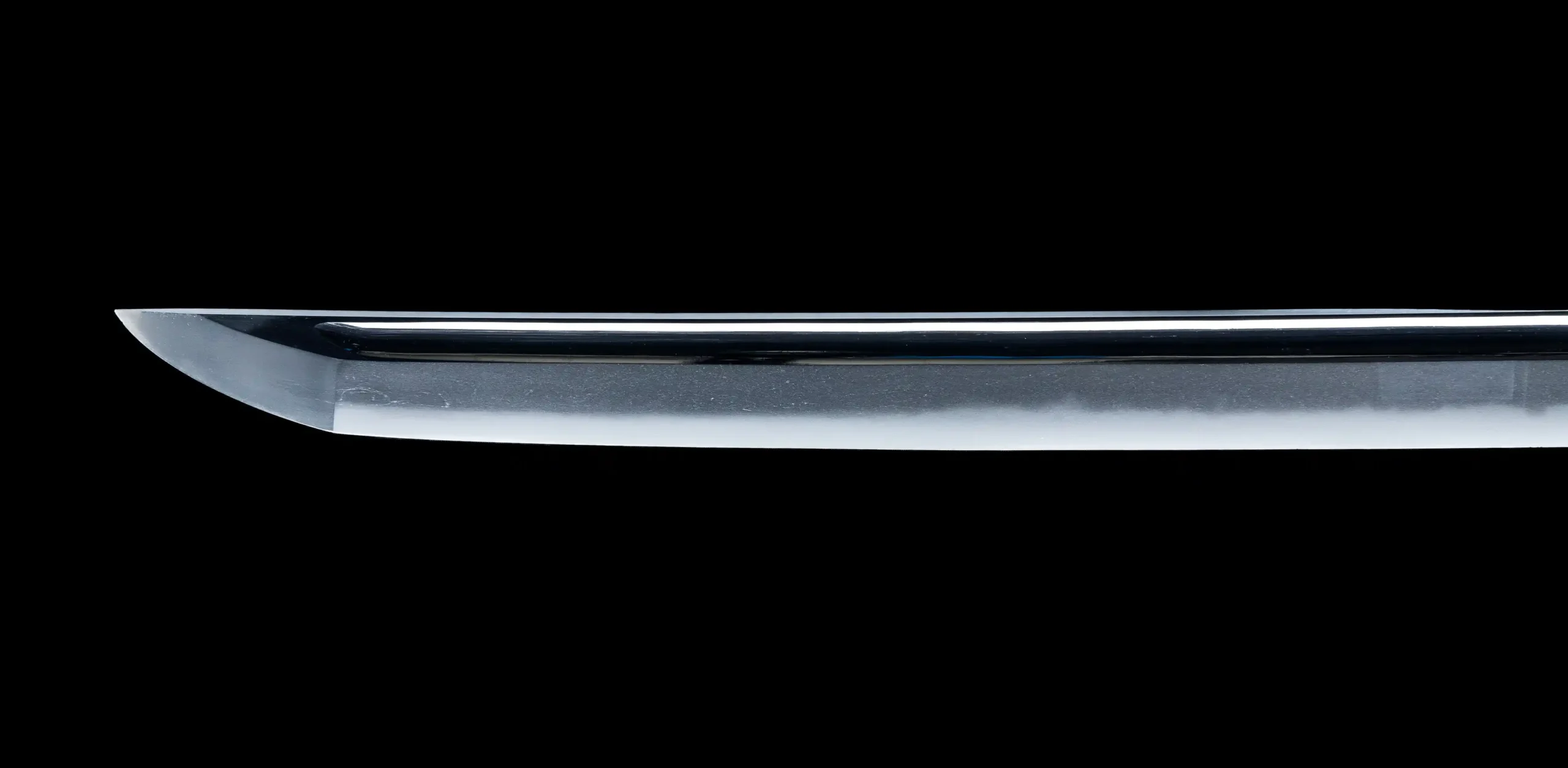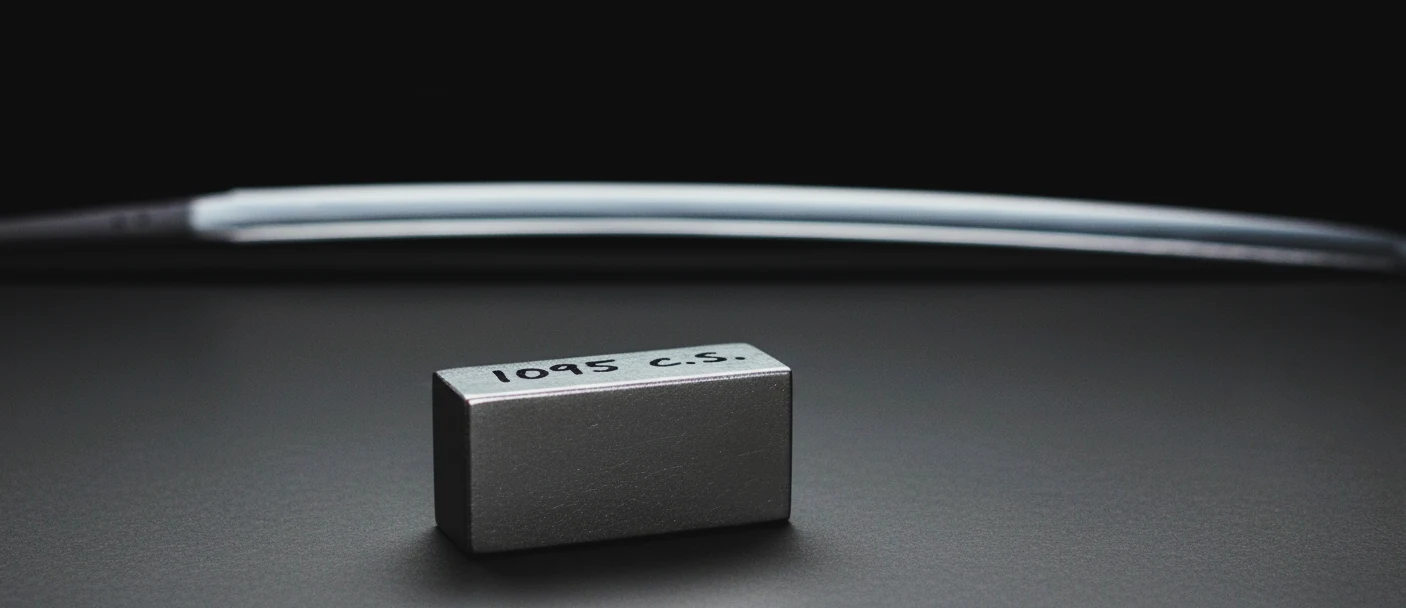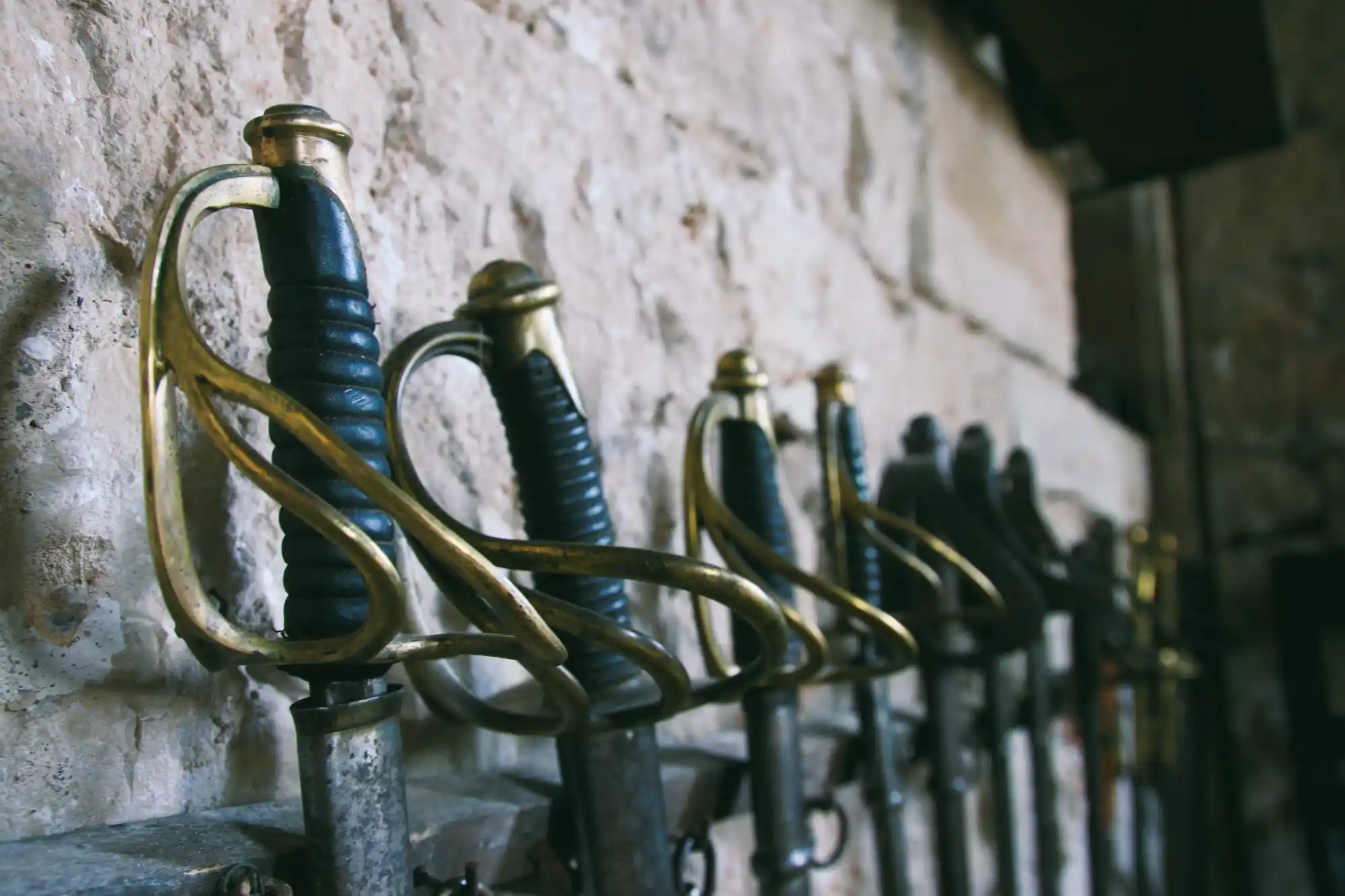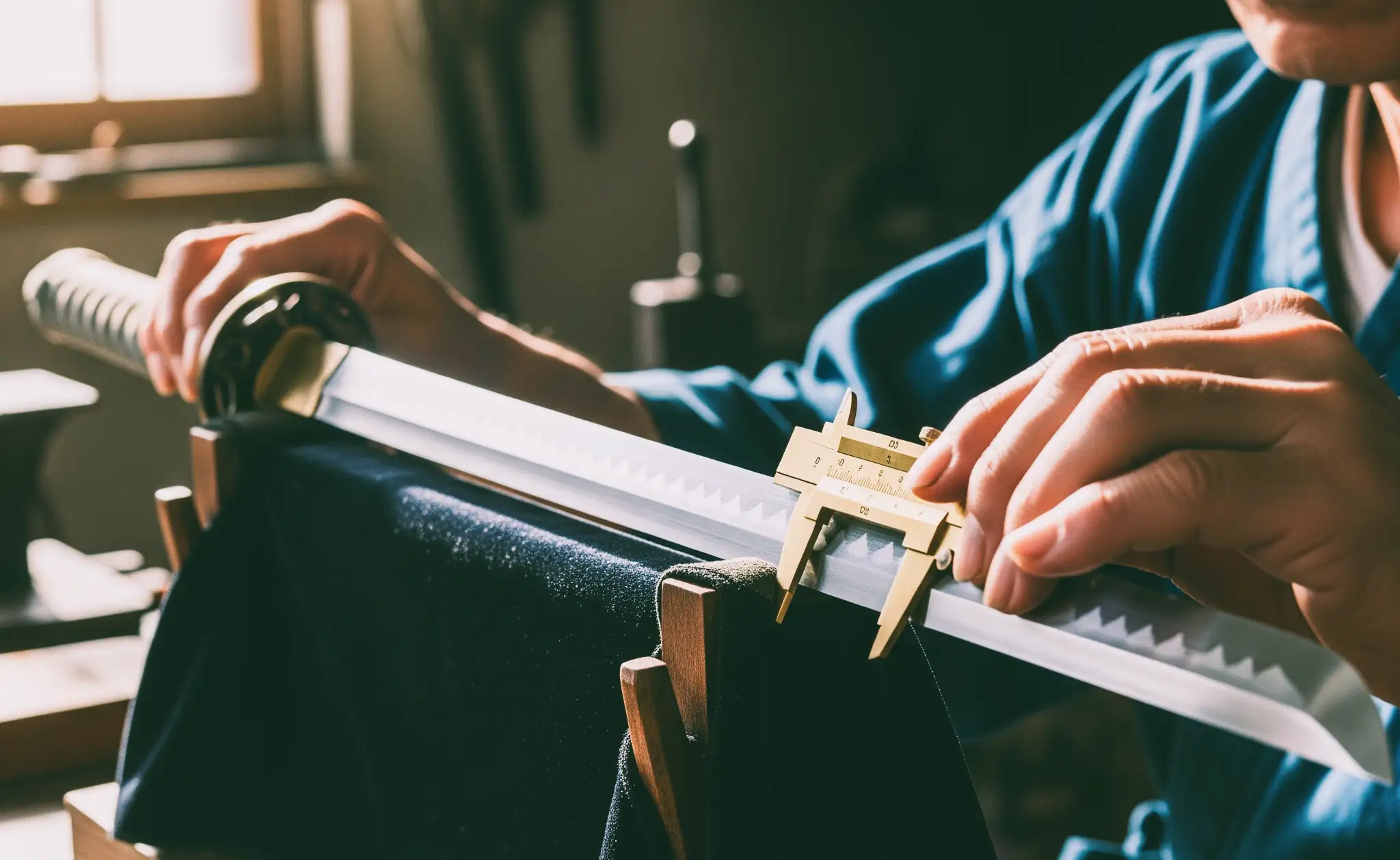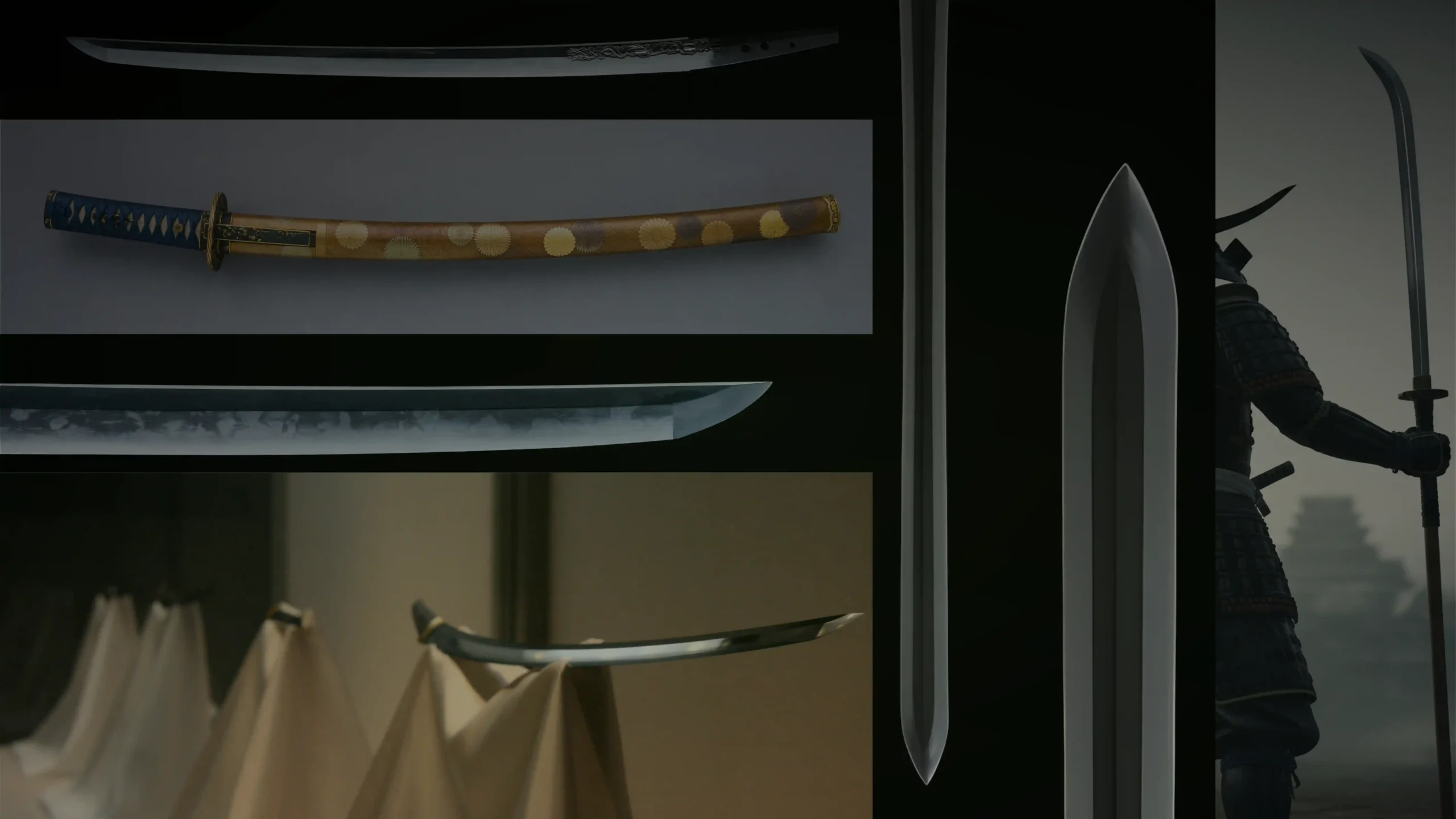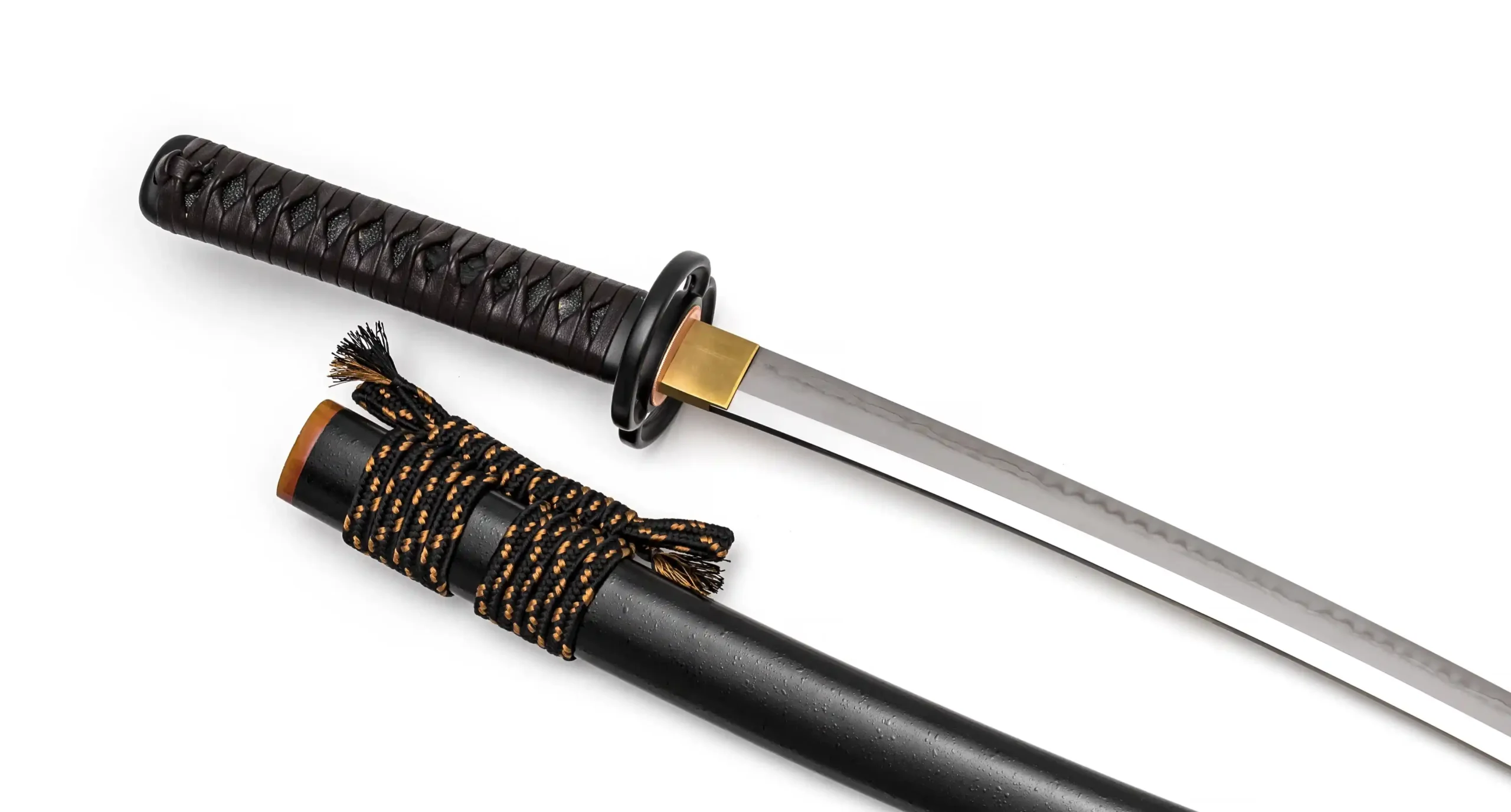We may earn revenue from the products available on this page and participate in affiliate programs. Learn more >
The comparison of tachi vs katana highlights two of the best samurai swords, each used during different periods and adapted to the warfare strategies of their time.
Though they might look similar at first, each has unique features and were used differently by the samurai.
In this article, we’ll explore the differences between these iconic swords, focusing on their history, design, and how they were used in battle.
Historical background
| Feature | Tachi | Katana |
| Period | Heian period (794-1185 AC) | Kamakura (1185-1333 AC) |
| Blade | Single edged – Deep Curve | Single edged – Slight Curve |
| Handle | Two-handed (with curve) | Two-handed |
| Overall Length | 100-115 cm (39-45 in) | 90-110 cm (35-43 in) |
| Design | Elaborate | Elaborate |
| Used by | Samurai Class | Samurai Class |
The tachi emerged during Japan’s Heian Period (794–1185), a time of imperial dominance and aristocratic rule. Warfare in this era often took place in open fields and relied heavily on cavalry. To suit this style of combat, the tachi was developed—designed for powerful downward slashes from horseback using one hand, and with two hands when fighting on foot. Its effectiveness in mounted warfare made it the dominant weapon of the samurai class during this period.

As warfare style transitioned from large-scale to more versatile fighting styles on foot, the Japanese katana gradually replaced the tachi. This new type was optimized perfectly for foot usage, focusing on precise cutting, quicker draws, and improved adaptability in confined spaces. The way it carried changed, and its design became slightly smaller and less curved. By the Edo period (1603-1868), it became the samurai’s primary weapon, symbolizing both their skill and honor.
Similarities Between Katana vs Tachi
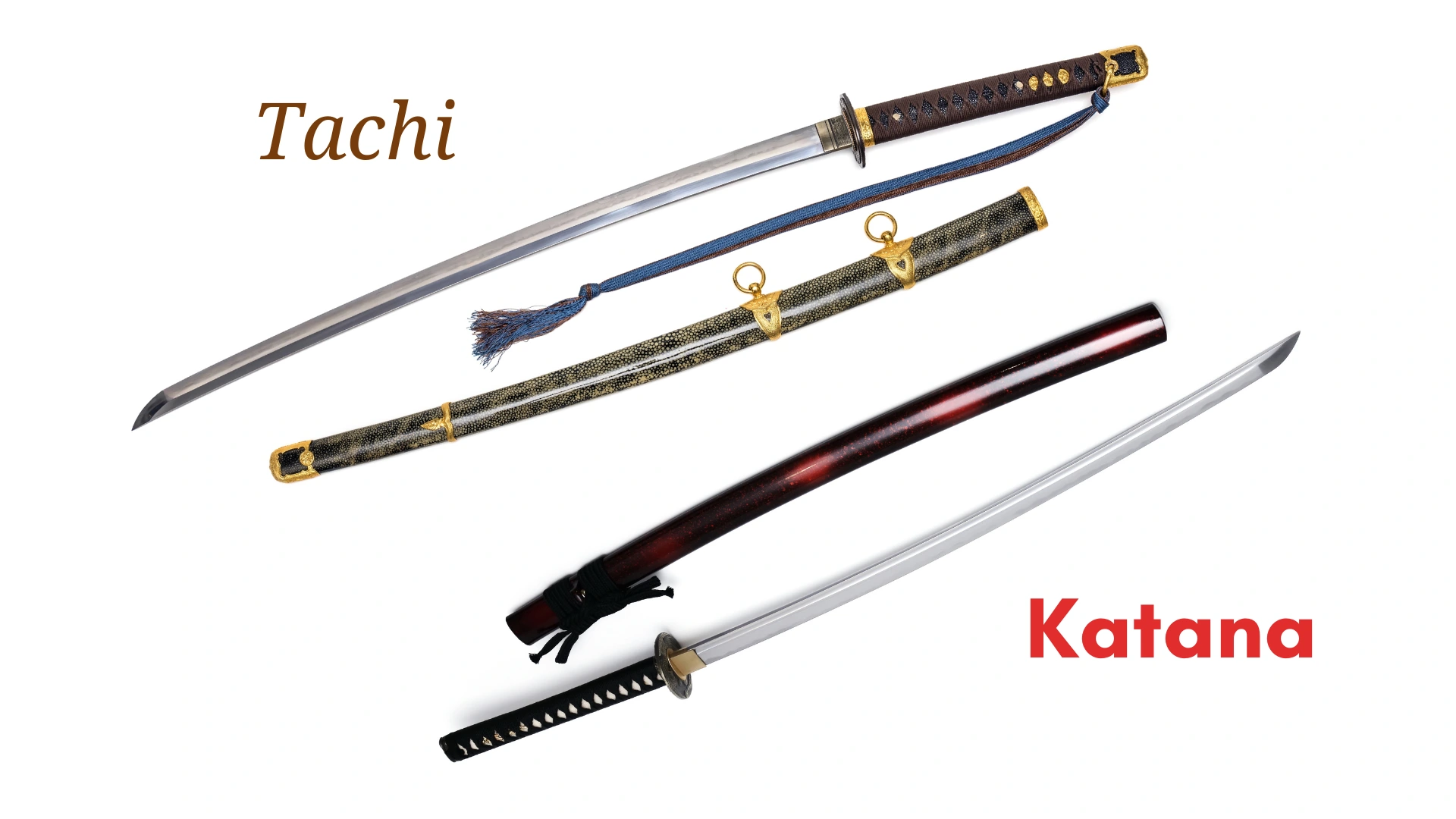
Both blades are traditional Japanese sword types used by samurai. They feature curved, single-edged blades made for cutting and hilts designed for two handed use. They go through similar forging techniques, sharpening processes and are made from the purest steel of the time(tamahagane). Additionally, their materials, fittings, securing methods, sometimes are often so similar that it can be hard to tell them apart.
So, how do you know if the sword you are looking at is a katana or a tachi? Let’s take a closer look.
Difference Between Katana and Tachi
There are a few differences between the katana and tachi, but three are the most important to know.
- Time period – The tachi was created in the Heian period, over three centuries before the katana, which emerged as an updated version during the Kamakura period.
- Length and curvature – Tachi is slightly longer and features a deeper curve.
- How they were used and carried – The tachi was worn edge down, hung from the belt, and mainly used on horseback, while the katana was worn edge up, slid through a belt, and used on foot.
I know many enthusiasts who, when looking at these swords, can’t tell the difference and tend to group them all as katanas. Honestly, it’s difficult to determine which sword a blade belongs to, since there aren’t many obvious differences. It’s hard to tell with the naked eye unless you have experience.
Here are some other details that can help you identify whether the sword you are looking at is a samurai katana or a samurai tachi, even though these are not exclusive.
1. How They are Displayed
Usually Japanese swords are displayed in the same way they were worn. So, tachi was worn with the cutting edge facing down while the katana facing up. This is how a katana is displayed following tradition and how to identify just from a display perspective.
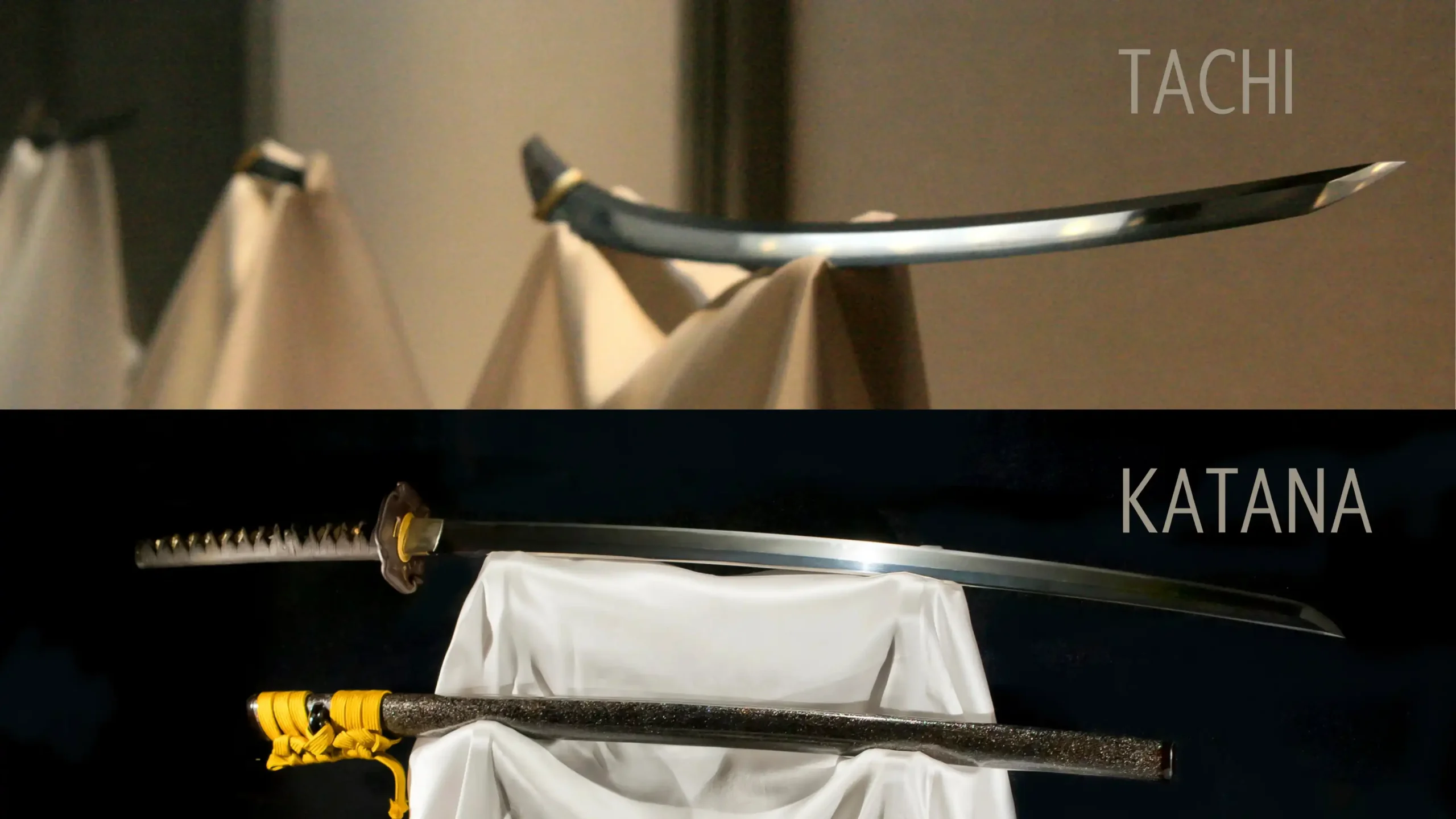
2. Extra details
Tachi swords are distinguished by several features not typically found on katanas. These include tachi-ashi, hangers made of steel, brass, or braided cords used to suspend the sword; a pommel or kashira often featuring a small loop; and a scabbard with decorative metal fittings called kojiri at the bottom, which both embellish and protect the scabbard’s end. Katanas doesn’t include these details in most cases.
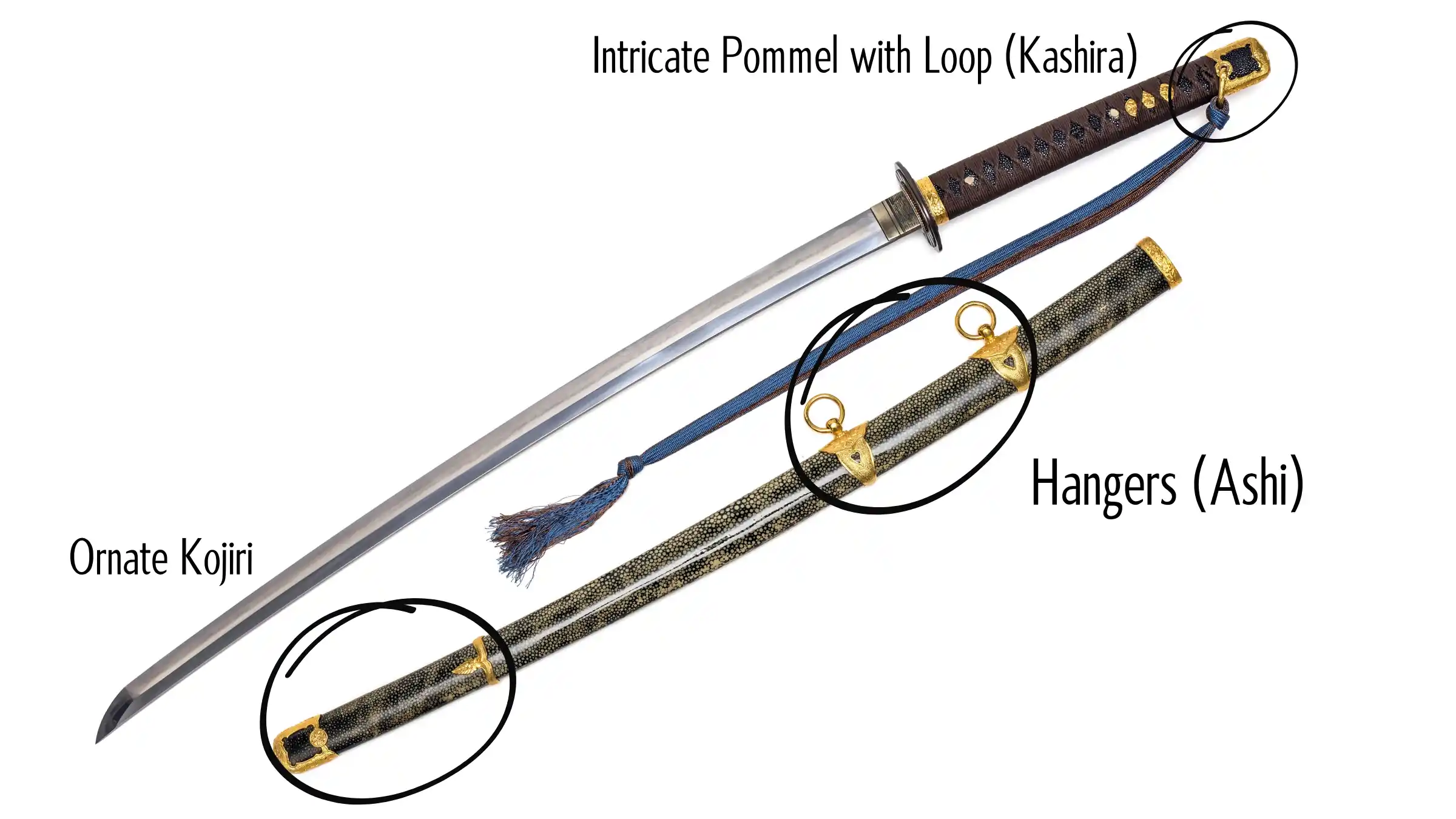
3. Tsuba
While both tachi and katana swords feature ornate and functional handguards (tsuba), the tachi’s tsuba often leans towards a more ceremonial aesthetic. A common shape for tachi tsuba is the Aoi-gata (as exemplified in the image below).

Which sword is heavier?
In concept, tachis tend to be slightly heavier than katanas because they are generally a bit longer. However, the exact weight of any sword can vary significantly based on its specific length and the materials used for its fittings.
So, is the tachi or katana better?
The katana is more effective on foot, while the tachi is better suited for horseback. Their differences, whether in design or in battle, are minimal and wouldn’t make a significant impact in combat. So it’s not about which one is better overall, but which one fits the specific use case.
Last Words
Both swords share similarities and differences. The tachi was crafted around 300 years earlier, while the katana came later as an updated version. In general, tachis are slightly longer and have a deeper curve compared to katanas(see, katana length and dimensions). The katana is worn with the cutting edge facing up, while the tachi is carried edge down. Both have two-handed hilts, single-edged blades, and a highly detailed appearance. Lastly, they are made using the same traditional crafting techniques.
Want to see more comparisons? We’ve got a few others for you.

